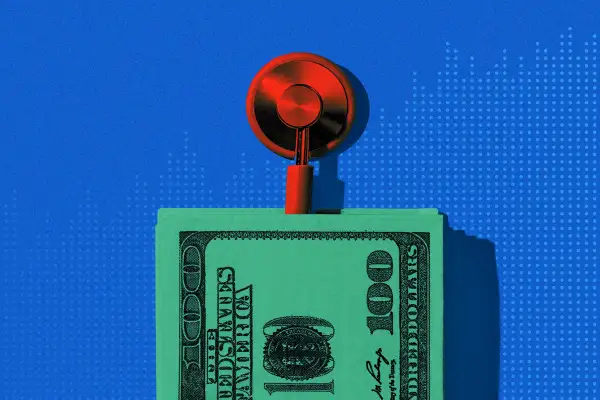Workers' Health Insurance Could Get a Lot More Expensive Next Year

Health insurance costs keep piling up.
Employers are expecting health plan expenses to spike 9% in 2026, according to a new survey from the Business Group on Health, or BGH. That’s the highest increase on record, with the health-benefits trade group going back to 2017.
“The story this year is perhaps more daunting and sobering than it has ever been,” Ellen Kelsay, the president and CEO of BGH, said on a press call last week ahead of the survey’s release.
The “somber forecasts” for next year are in addition to an abnormally high 8% projection from last year, the group's report says. Employers in the survey say they might be able to contain the cost increases in 2026 to 7.6% — also a record high — if they take cost-cutting measures to their health plans.
BGH’s survey is based on responses from 121 major employers with health plans that collectively cover 11.6 million workers.
According to the health research nonprofit KFF, employers that offer health insurance typically pay between 75% and 85% of the plan’s expenses and pass the rest onto workers. The remainder is usually deducted from their paychecks in the form of premiums.
In 2024, the typical health insurance premium for a single worker was $8,951 annually, KFF says, with $1,368 paid out of pocket by the worker and about $7,600 covered by the employer.
Separate research from the financial consulting firm Mercer suggests that the ratio might change next year, as 51% of employers say they are likely to shift more health plan costs onto their employees.
“More employers will likely reduce benefits in 2026 as they try to control fast-growing health benefit costs,” Beth Umland, director of health and benefits research at Mercer, says in a report.
What’s driving up health insurance costs?
Most employers in BGH’s survey agree on a handful of factors that are increasing the price of employer-sponsored health insurance.
About 8 in 10 employers say that increased usage of new obesity treatments (such as Ozempic and Wegovy) is making plans pricier. Nearly three-fourths point to a higher prevalence of cancer among employees than in previous years. Increasing treatments for mental health and other chronic conditions are other core reasons, employers say.
Soaring pharmaceutical prices are exacerbating these trends. Employers tell BGH that they expect prescription drug costs to jump by 12% next year.
The group says a “macro-level overhaul of the pharmacy supply chain is needed to address pharmaceutical costs.”
Obamacare costs are slated to jump, too
An estimated 65% of private-sector workers have health insurance through their workplace, according to figures from the Department of Labor. Folks without a workplace plan can get health coverage through the Affordable Care Act, or ACA.
Major price increases are coming for those plans, too.
At the end of the year, enhanced subsidies that lower premium payments for health coverage through the ACA, commonly referred to as Obamacare, are set to expire.
The boosted subsidies — enacted by former President Joe Biden’s Inflation Reduction Act — have lowered premium payments by an estimated $705 a year for those who receive the discounts, according to KFF.
If Congress does not renew the subsidies, premium payments are expected to increase by more than 75% on average, KFF says. And the non-partisan Congressional Budget Office estimates that 7.4 million Americans could lose ACA coverage as a result.
More from Money:
Can Trump Force Drugmakers to Lower the Cost of Your Prescriptions?
Workers Are Losing Over $4 Billion in Unspent Health Care FSA Money a Year
